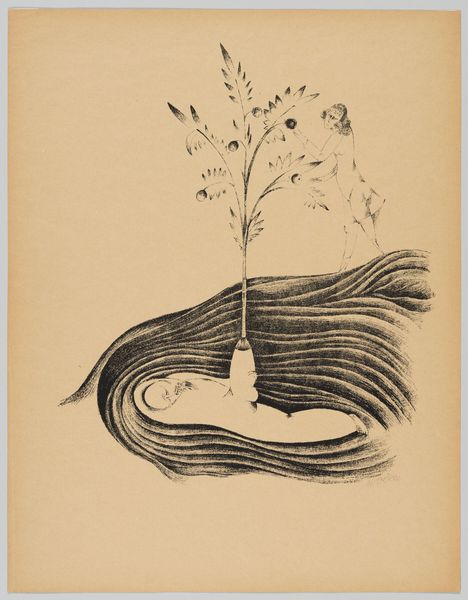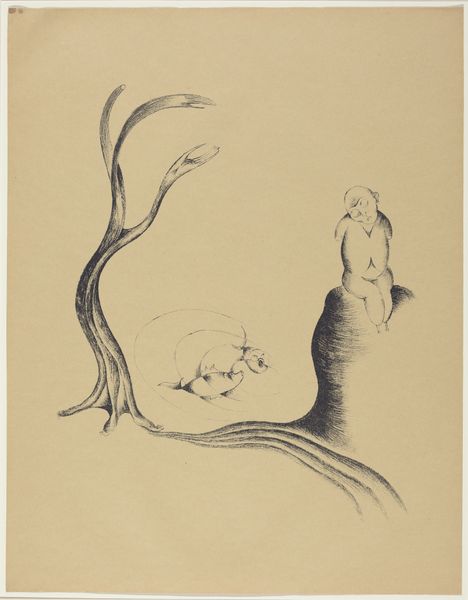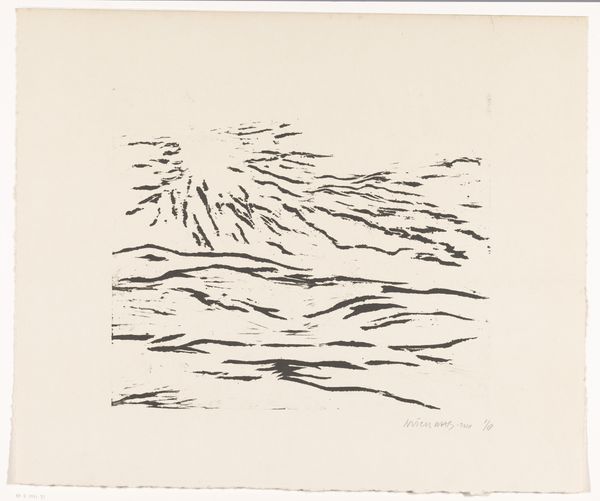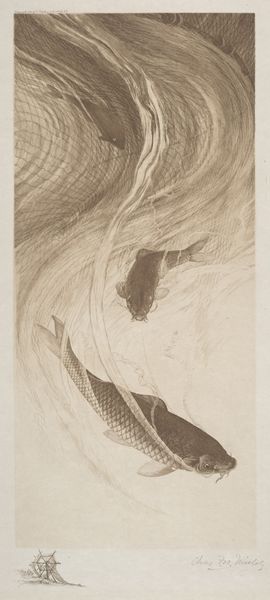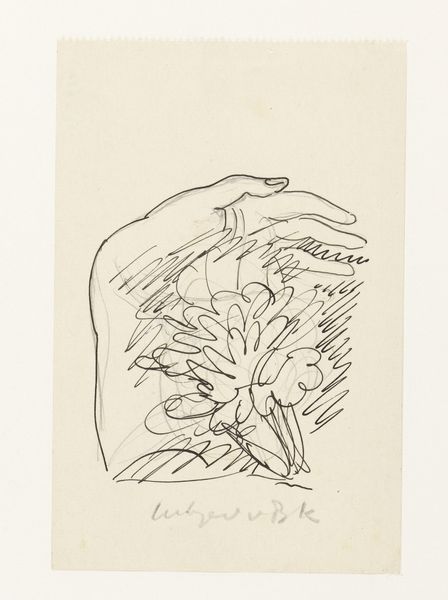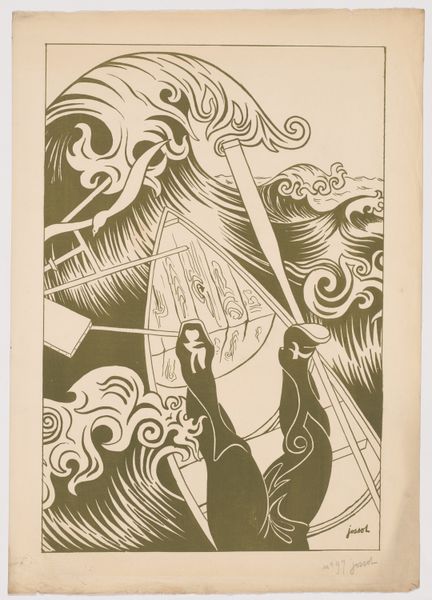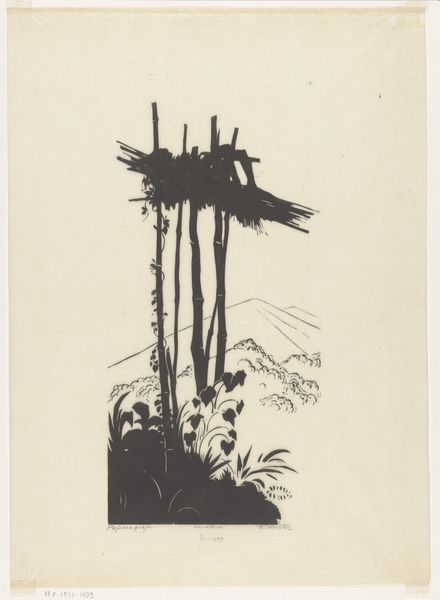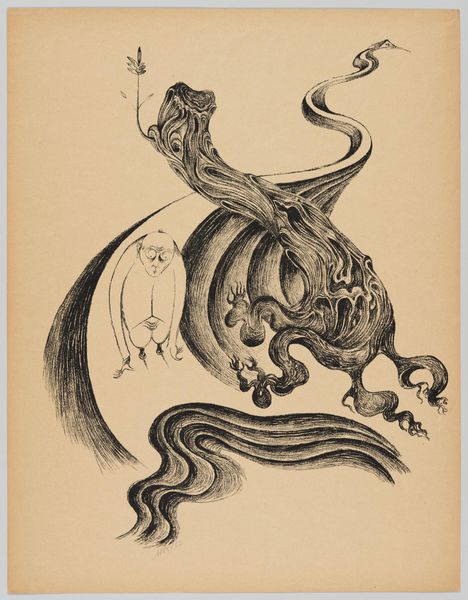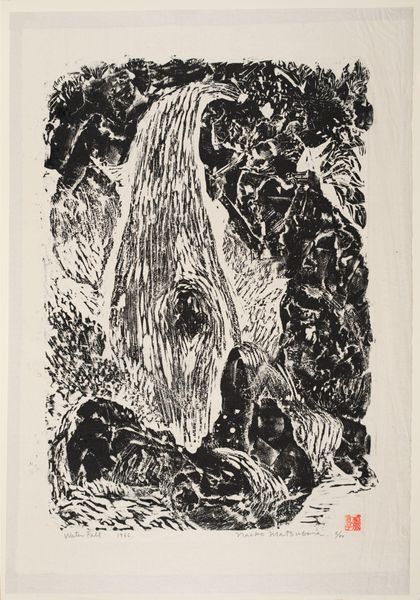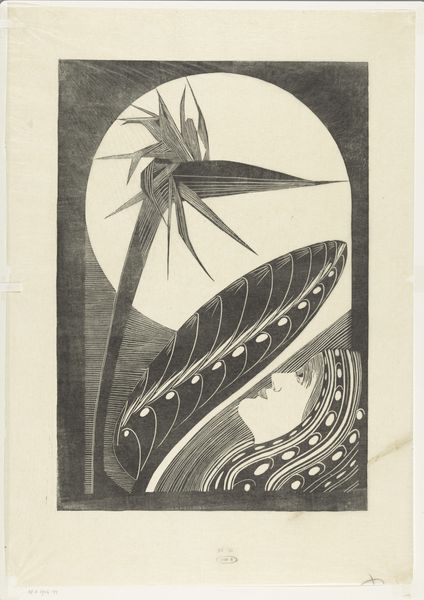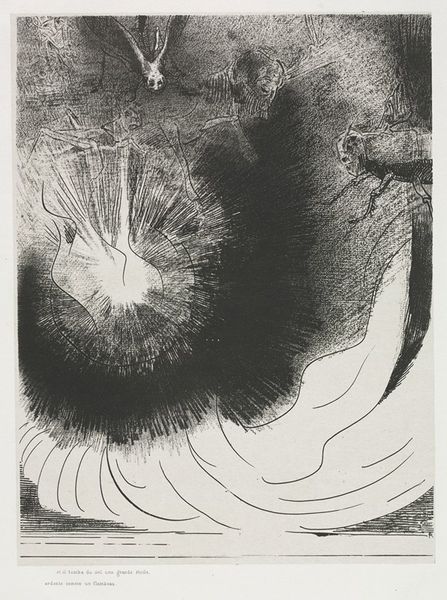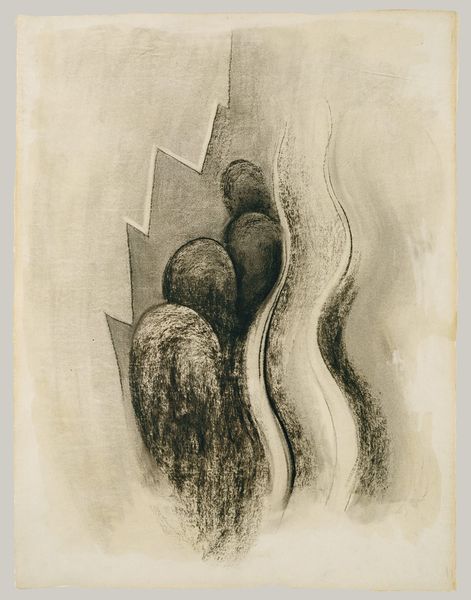
drawing, print, ink, pen
#
drawing
# print
#
pen sketch
#
pencil sketch
#
landscape
#
figuration
#
ink
#
pen-ink sketch
#
line
#
symbolism
#
pen
Dimensions: overall: 59.3 x 45.8 cm (23 3/8 x 18 1/16 in.)
Copyright: National Gallery of Art: CC0 1.0
Editor: "Friendly Dreams," drawn by Heinrich Hoerle in 1920. It seems to be pen and ink on paper. I’m really drawn to the contrast between the delicate lines of the tree and the denser, almost wave-like patterns beneath it. It feels…symbolic. What do you make of this work? Curator: It's a fascinating piece. Hoerle was active in the Rhineland during a period of immense social upheaval. Consider the date, 1920. Germany was reeling from World War I, grappling with economic collapse and political instability. Knowing this, how does it influence your perception of the artwork? Editor: I hadn't considered that context specifically. Now I’m thinking that maybe what looks like a serene landscape isn’t so peaceful. The waves… they feel almost like something overwhelming the sleeping figure beneath. Curator: Exactly. And who do you think gets to decide that it’s just friendly dreams? Perhaps there is an unsettling public discourse. It makes you wonder who dictates those friendly dreams. Do you consider the figure standing on the bank as either being part of that friendly dream, or creating it? Editor: Hmm… that's a good point. It definitely complicates things. The figure harvesting fruit could be a caretaker, or maybe someone exploiting the resources of the dreamer's world. The tree becomes more than just a tree, too - perhaps an embodiment of this system. Curator: Precisely. The personal and the political intertwine. How are individuals shaping dreams and perhaps controlling narratives in times of socio-political hardship? Editor: I see this piece very differently now. The visual contrast and the unsettling themes suggest more about public mood and social power dynamics. Curator: Agreed, thinking about the politics of imagery offers deeper understanding of the era's cultural anxieties and power dynamics.
Comments
No comments
Be the first to comment and join the conversation on the ultimate creative platform.
